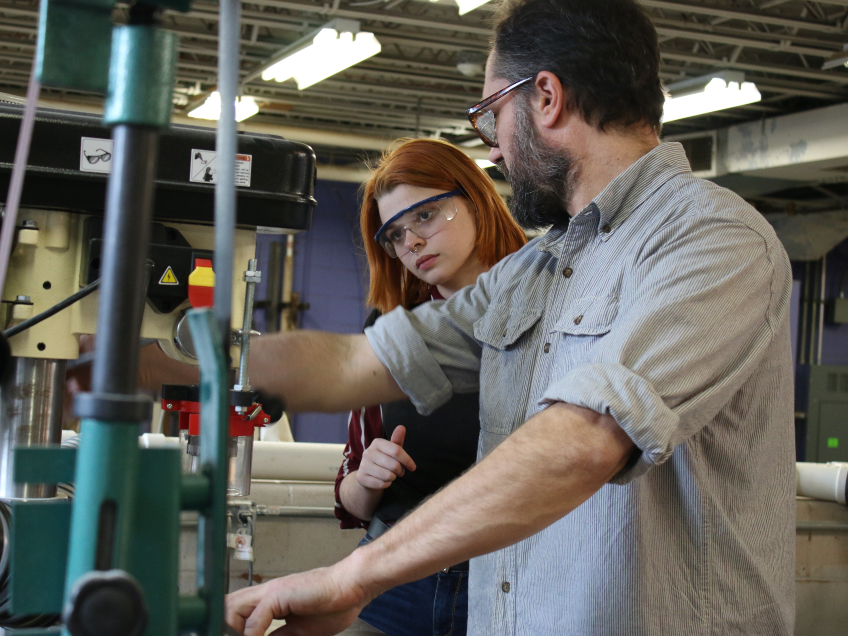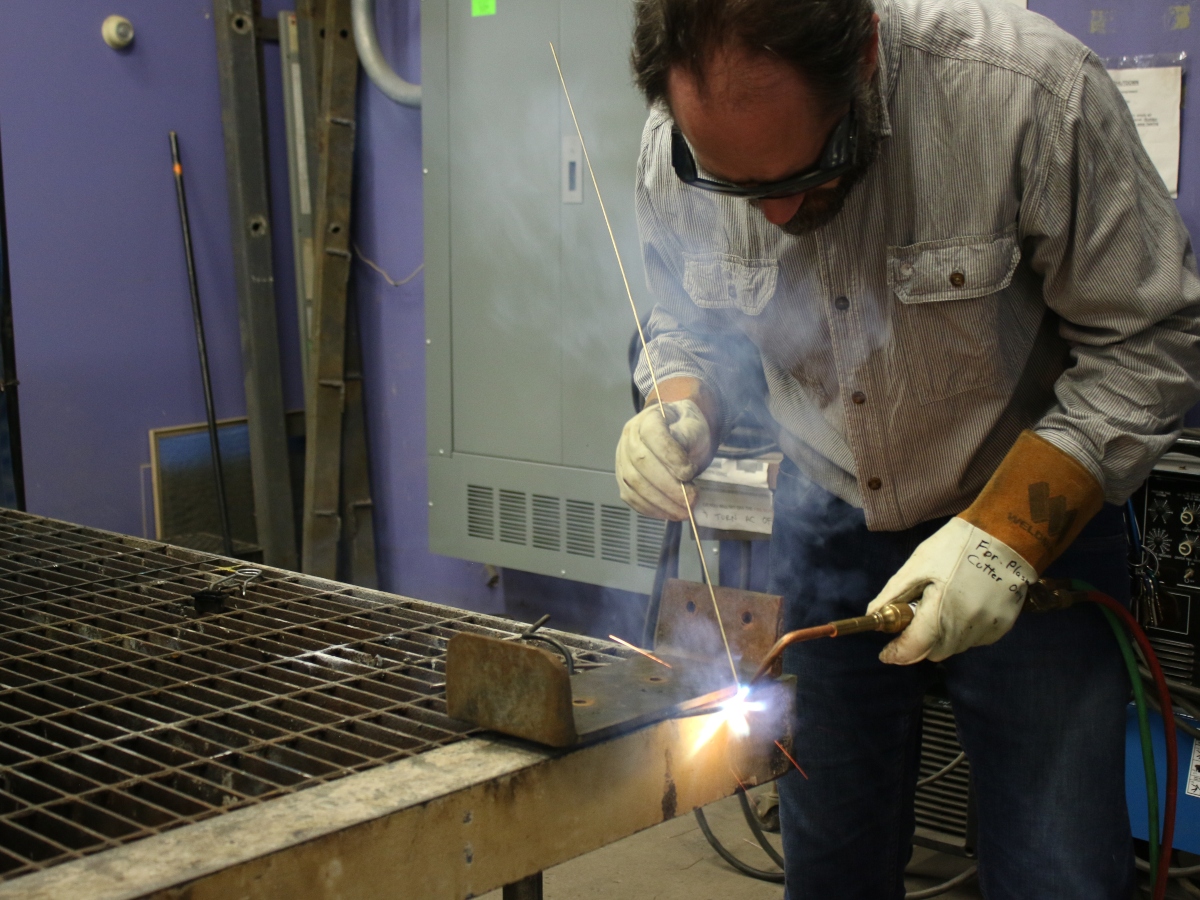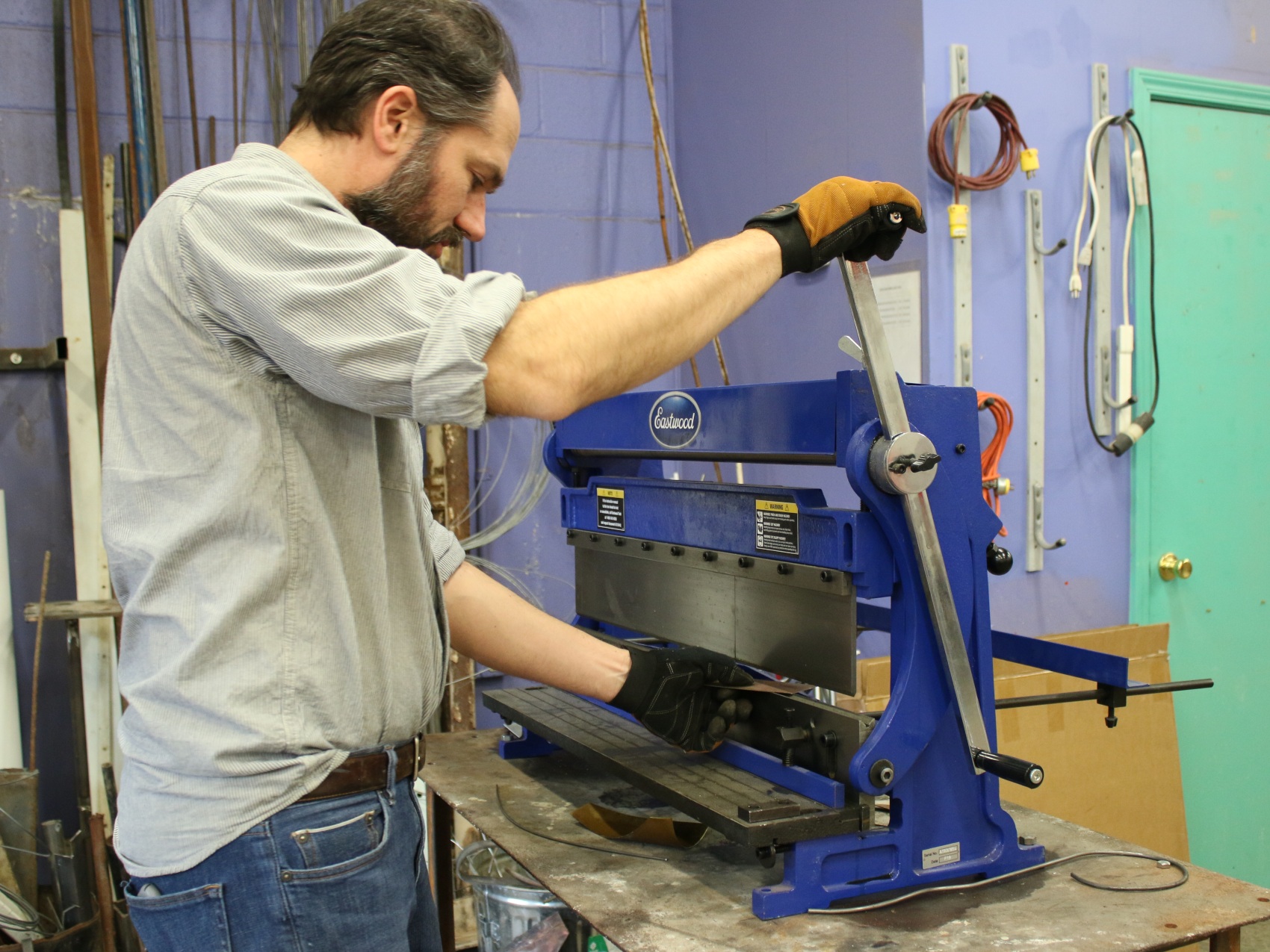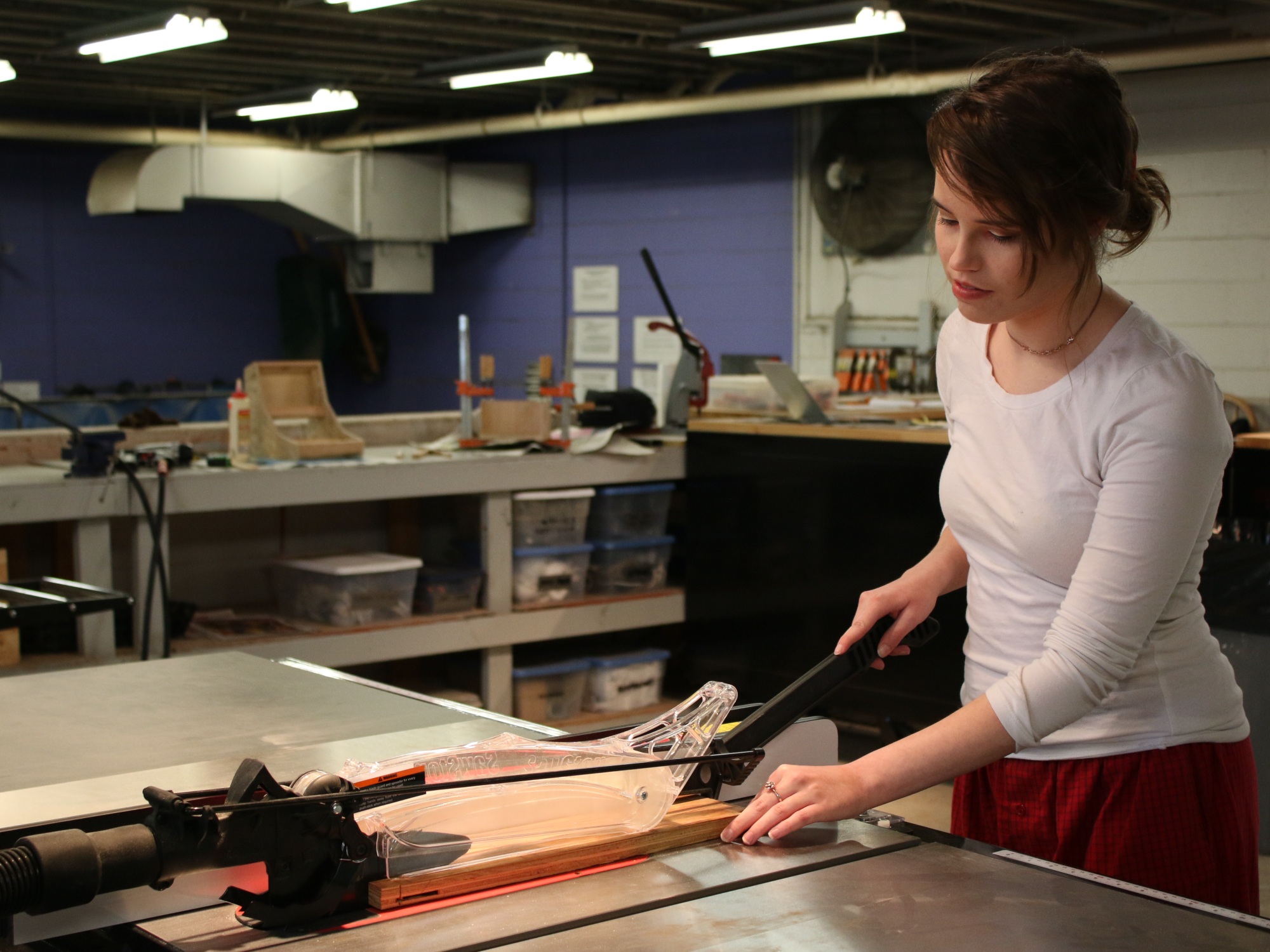
An appropriate motto for today’s Spalding University Creative Arts Department would be: If you have an idea of something you’d like to make, we have the tools you’ll need. Lots and lots of them.
The art program – and the capacity for students to bring their concepts to life – has been bolstered this academic year with the unveiling of the Spalding Makerspace, a series of large rooms in Mansion East that are newly equipped with both state-of-the-art digital art technology and a bevy of traditional wood- and metal-working machines.
“It’s a pretty exciting moment for the art program and the Spalding campus as a whole,” said Assistant Professor of Digital Media Josh Azzarella, who has overseen the acquisition of a 3D-printer, a laser cutter and other high-tech devices in the new Makerspace.
The high-tech pieces combine with the many saws, shears and welders in the new wood and metal shop to create a Makerspace that will be heavily integrated into the curriculum of an art department that’s focused on introducing students to design thinking and how it applies to a range of ways to build and make.

Hennessey uses welding tools in the Spalding Makerspace.
“Oh, man, we are so lucky,” said Assistant Professor of 3D Art Shawn Hennessey, who is also Creative Arts’ studio technician and the manager of the wood and metal shop. “We have this great confluence of high and low tech. We have all these low-tech options, so that people can still work with their hands, and we also have all these high-tech things for students to utilize their technical prowess or use a computer to make something physical. I think it’s a cool program because you can go back and forth between the two.”
The goal is that by graduation, Creative Arts students who use the Spalding Makerspace will be proficient in using the array of high- and low-tech equipment and have a broad understanding of creative problem-solving. They will learn many ways to make art and manipulate materials while developing skills to land a job in a field that regquires design thinking and craftsmanship.
“The things that students do here at Spalding are concept-driven,” Hennessey said. “They have an idea of something they want to make, or a project they want to do, and that steers them, and they gather the skills along the way.”
Here’s a rundown of some of the equipment in the new Spalding Makerspace:
Digital/High-Tech Spaces
3D laser-cutting printer: After a design is entered into a computer, the Glowforge laser cutter burns it onto wood – etching, engraving and cutting with very fine and precise lines and curves.
In the span of a few minutes on a recent afternoon, Azzarella cut and engraved a half-dozen wooden key chains.
3D printer: The Creative Arts Department is acquiring a Formlabs Fuse 1 3D printer that creates pieces using powdered nylon and a laser through a process called selective laser sintering.
The high-tech printers will enable Spalding art students and faculty to use their imagination to create not only interesting pieces of art but also explore how creativity and design thinking can be applied to make functional devices and inventions in all kinds of settings and fields.
Because that printer is capable of making products that are flexible and bendable, Azzarella foresees the Creative Arts Department collaborating with faculty from Spalding’s Auerbach School of Occupational Therapy to make assistive-technology devices and modifications for people with disabilities.
They’ve already had success.
Using a different 3D printer, Azzarella and occupational therapy Associate Professor Dr. Sara Story teamed up to design and build a small plastic attachment that fits on a toy baby stroller belonging to a 2-year-old girl who was born a limb difference and only one hand. With Azzarella and Story’s modified device, which cost only 42 cents to produce, the girl is able to use both arms to push and steer the stroller that she loves so much.
“If we’re able to do that for more kids or more people in the community, that’s amazing,” Azzarella said. “It’s fulfilling in a way that I haven’t really felt before. … We kind of changed the world of a little girl’s life.”
Hennessey, who builds puppets and puts on community puppet shows through Squallis Puppeteers, agreed.
“I want our students to understand that you don’t just have to make something to sell,” he said. “(By using your creativity) you can actually improve your community.”
A digital sewing machine: Students design a fabric pattern on a computer, which then sends the file to the sewing machine to stitch the pattern at a high speed. Azzarella said it’s a neat machine for students interested in embroidery.
Virtual reality technology: By wearing an HTC VIVE headset and using Google Tilt Brush software, students can paint virtually in a panoramic, three-dimensional setting. It’s a useful tool for students who are interested in designing video games or virtual environments. “Students can paint like they would on a canvas,” Azzarella said, “but we can enter that painting, walk into it and through it and around it and look at it from every different vantage point.”

Hennessey uses a metal cutter.
Wood Shop/Metal Shop
The large studio at the end of the lower level of Mansion East has been updated and equipped with nearly 20 new pieces of professional-grade wood- and metal-working machinery. The shop provides art students with a foundation for learning to use traditional three-dimensional materials in a safe, clean, well-supervised setting.
Hennessey said he’s had fun seeing dozens of students quickly gain confidence using saws, drills, metal shears, sanders and welding machines that may have originally felt intimidating.
“I’ve been really trying to challenge my students, ‘Go use the welder,’” he said. “I want to empower them to feel like that they can do it. Also, just teaching all students simple but important skills like how to use a tape measure and how to do these concrete things that will affect other areas of their life, I’m excited about that and proud of that.”

A student cuts a piece of wood on a table saw.
Here are some of the wood-working and metal-working machines in the Spalding Makerspace:
- Table saw: The SawStop saw has an electronic braking safety system that instantly stops the blade if anything other than wood comes close to it.
- Planer: For smoothing and planing the rough edges off boards.
- Band saw: To make rounded and precise cuts on boards.
- Belt/disk/spindle sanders: Capable of smoothing all sizes and shapes of wood.
- Drill press: For drilling precise holes or making circular cuts.
- Knife grinder: For sanding and sharpening knives and blades.
- Compound miter (or chop) saw: For making cross cuts with circular blades – useful in building picture frames.
- Shaper: For making joinery and complex cuts.
- Lathe: For turning wood.
- Welders and plasma cutter: For manipulating and cutting metal with intense heat and flames.
- English wheel: For rounding sheets of metal.
- Shrinker stretcher: For stretching or shrinking metal.
- Throatless shear: For cutting metal on a curve.
- Sand blaster: For smoothing metal.
- Combination sheer/brake/roll: For cutting and rolling metal.